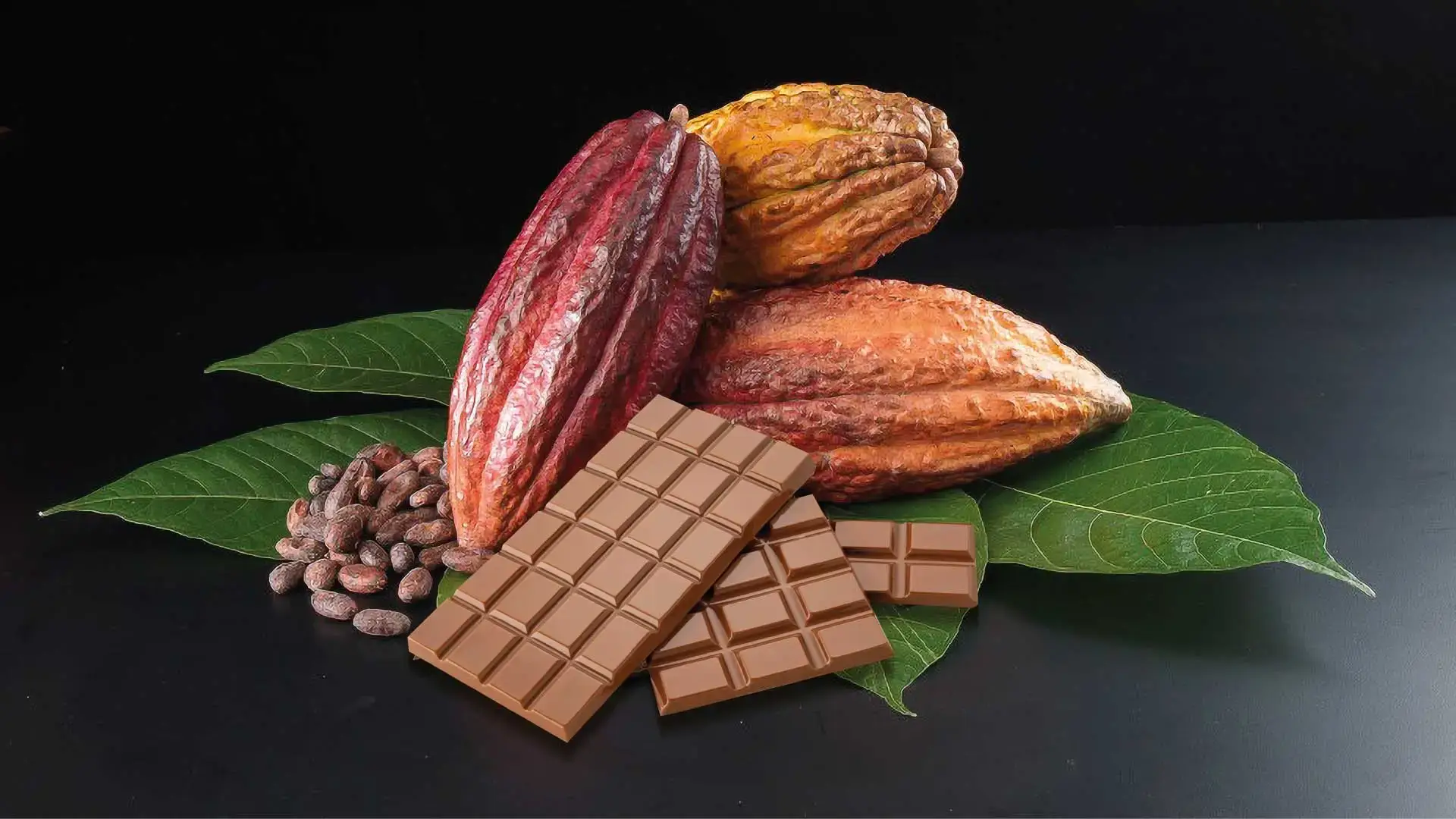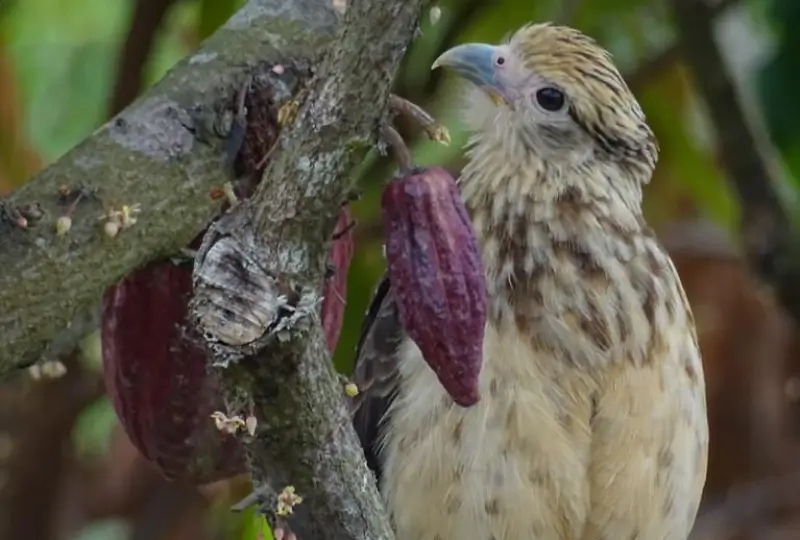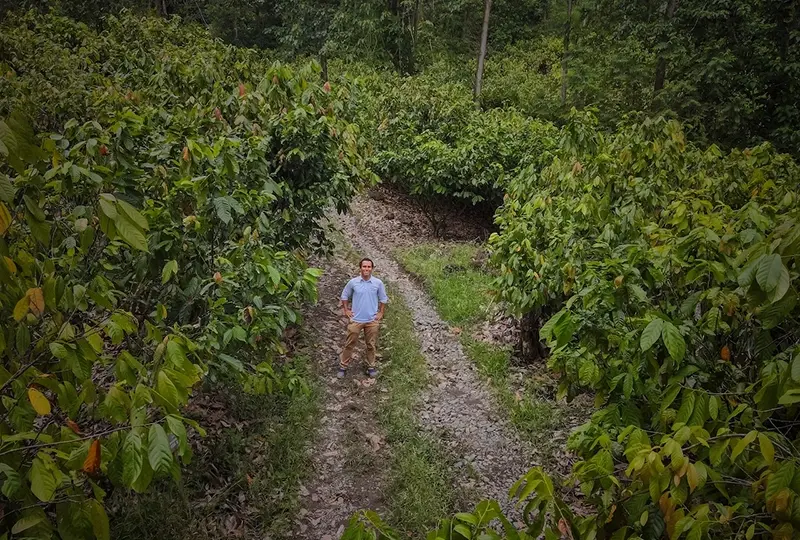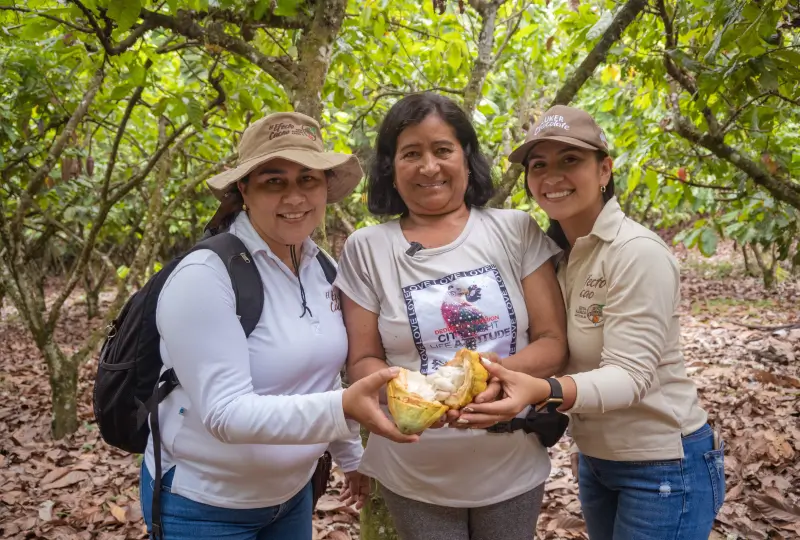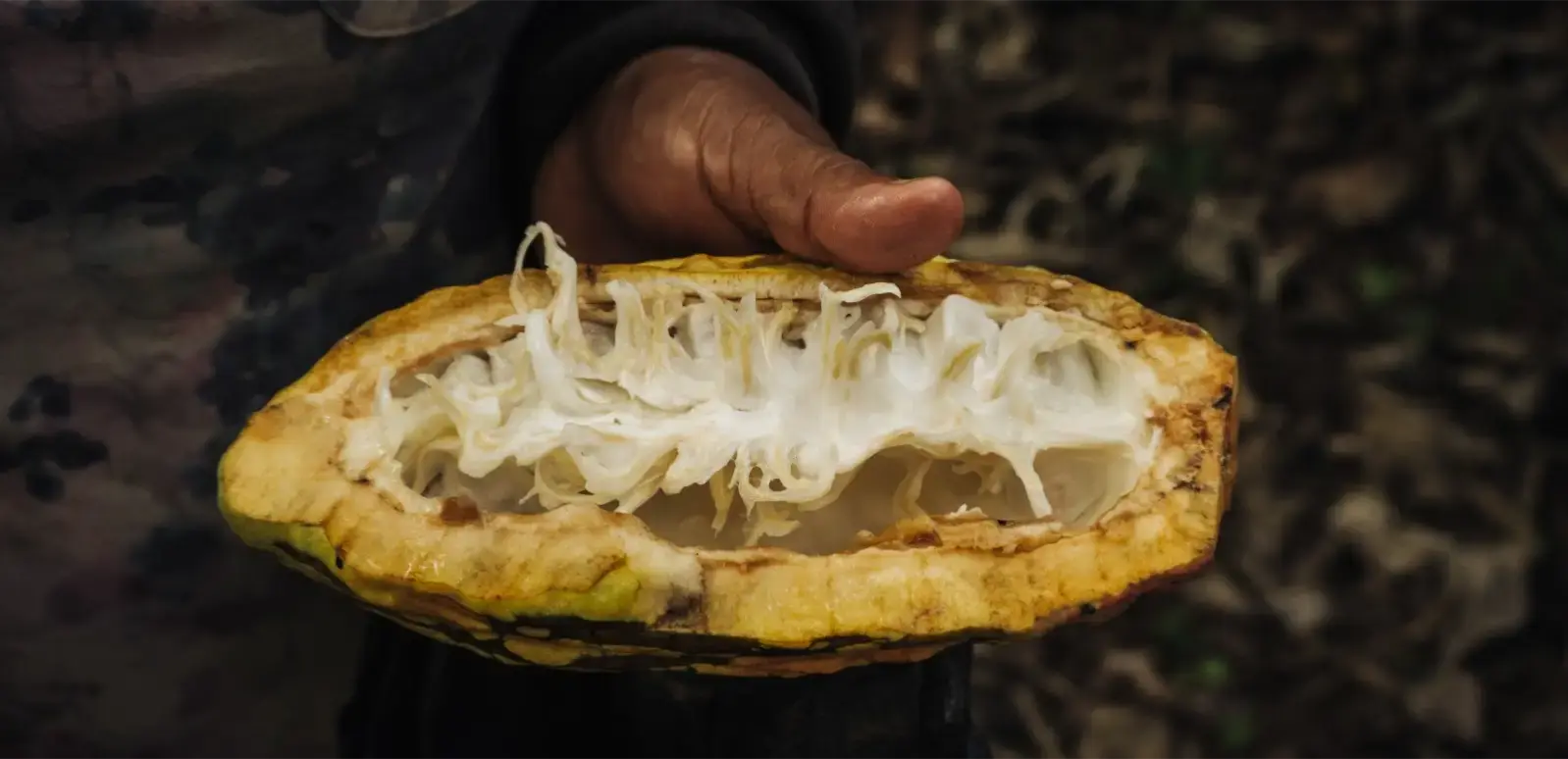| Updated and republished 18th of November, 2025 |
| This blog was originally posted on 22nd May 2024 and has been updated for clarity, relevance, and accuracy. |
Over the last two years, the global cocoa market has experienced one of the most significant periods of volatility in its history. Climate impacts, crop disease, regulatory shifts, and speculative activity have contributed to rapid movements in cocoa futures, creating uncertainty for producers, manufacturers, and chocolate brands.
As market conditions continue to evolve, understanding the drivers of price fluctuation — and how they affect sourcing planning, production costs, and long-term supply relationships — remains essential.
Keep reading to further understand what has influenced cocoa market volatility, how these changes are shaping the chocolate value chain, and what organisations should consider moving forward in this context
Table of contents:
- What is behind cocoa price volatility?
- How do Price Movements Transmit Across the Value Chain?
- Are farmers benefiting from the cocoa price context?
- How to navigate the way forward?
Understanding these price fluctuations is crucial. The change in cocoa prices conditions the entire supply chain: farmers in cocoa-producing regions, chocolate companies, and end consumers purchasing chocolate products.
|
📊 Market Update — As of November 2025
|
What are the factors contributing to cocoa price volatility?
El Niño phenomenon and crop diseases
The El Niño weather pattern has significantly disrupted cocoa production in major producing countries. Characterised by high temperatures and low humidity, El Niño conditions have severely impacted cocoa harvests in regions like the Ivory Coast and Ghana, which account for approximately 70% of the world’s cocoa supply.
- The 2023/24 season was heavily impacted by El Niño, which brought prolonged periods of drought and high temperatures to West Africa, where over 70% of the world’s cocoa is grown. These conditions damaged flowering cycles and reduced yields.
- As projected, the % reduction in Ghana’s cocoa production for the 2023/24 season marked the lowest in 14 years. Such significant reductions in output from key producing regions inevitably tightened global supply, resulting in upward pressure on the market price.
- Simultaneously, the International Cocoa Organisation (ICCO) reported that the spread of swollen shoot virus in Ghana decimated over 500,000 hectares of cocoa farms, contributing to the lowest national output in 14 years.
- For 2025 the global cocoa production was expected to be 8% higher than 2024, reaching 4,840 million tonnes.
Investor Speculation
Investor activity further contributed to price volatility. According to a report by J.P. Morgan on 3rd April 2024, the initial supply issues exacerbated by dry weather conditions were intensified by investor speculation.
Speculation significantly amplified market movement. Non-commercial investors dominated the futures market in early 2024, holding over 60% of positions. Their rapid exit in Q1 2025 triggered sharp corrections.
While speculative activity has now decreased, price sensitivity remains elevated, with market sentiment swinging quickly in response to new data releases or forecasts.
|
*The Impact of EU Regulation on Deforestation-free Products (EUDR) The EU Regulation on Deforestation-free Products (EUDR), which was designed to combat deforestation, could potentially impact the market. These regulations require cocoa-producing countries to implement comprehensive due diligence processes, with sustainable chocolate manufacturers that prioritise traceability systems, data collection, verification of producers, assessments of deforestation risks, and active monitoring of deforestation and human rights enforcement. The long-term effects of these measures on the cocoa supply remain uncertain as the industry adjusts to these new compliance and monitoring requirements. It is still uncertain whether the regulation will increase supply pressure and impact prices. Dive deeper: Understanding the new EU Deforestation Regulation on cocoa |
How do Price Movements Transmit Across the Cocoa Value Chain?
Cocoa price volatility affects each part of the value chain differently — and not always at the same pace. Futures markets move quickly, while physical supply chains respond more gradually due to harvest cycles, inventory timing, and contracting terms.
When prices rise rapidly, the global futures market adjusts almost immediately. However, farmers and chocolate manufacturers operate on different time frames:
- Cocoa farmers sell during harvest windows and according to national or local pricing systems.
- Chocolate manufacturers work with stocks purchased earlier in the market cycle.
- Finished product pricing reflects the cumulative cost of ingredients, production, and logistics over time.
This means that price changes do not transmit uniformly and inmediately, and market declines do not instantly reduce manufacturing costs.
How Price Transmission Works for Cocoa Farmers
Price volatility poses one of the biggest challenges for cocoa farmers worldwide. Just like you, farmers face challenges planning production and managing finances amid volatility and high uncertainty. Ensuring that farmers receive high price transfers for their cocoa is crucial for maintaining the sustainability of the supply chain.
In many producing regions, national pricing models determine the base price paid to farmers.
Record cocoa prices in 2024–2025 sparked an urgent question across the industry: Are farmers, the very foundation of the cocoa supply chain, truly benefiting? The reality is complex. In many producing countries, farmgate prices have remained disconnected from global markets.
At Luker Chocolate, we take a different approach: High Price Transfer as a long-term commitment.
We are committed to increasing the incomes of cacao-growing families by:

- Improving profitability, enhancing quality, and building stronger direct-market connections.
- Optimising productivity and refining post-harvest processes, while strengthening cacao associations through capacity building in administration, commerce, and governance.
- Actively promoting entrepreneurship and income diversification, equipping farmers with opportunities to expand their revenue streams and build stronger, more sustainable livelihoods within the cacao sector.
We maintain a direct relationship model that ensures producers receive a high price transfer, even amid market volatility.
|
Between May 2023 and April 2024, we paid farmers in our supply chain an average of USD $8,025 per ton—approximately 81% of the global futures price. This compares favorably to the 49–53% share typically passed on to farmers in Ghana and the Ivory Coast during the same period (GlobalData, 2024). Continuing this commitment, from January to June 2025, we have transferred an average of 82% of the global NY futures price, amounting to roughly USD $7,652 per ton. And from July to September 2025, we have transferred an average of 75,5% of the global London futures price, amounting to roughly USD $6,775 per ton. |
To better respond to market volatility, we shifted from weekly to daily purchasing agreements.
These prices include:
- Additional bonuses for quality, beans’ sensory profiles, and fermentation techniques
- Timely payments with full transparency and documentation
This increase in income has represented the opportunity for farmers to invest in their farms through better infrastructure, fertilisation, and crop maintenance, among other things. This positive outcome will also help ensure stable sourcing in the coming years, as the effect will be seen in the following harvests.
This consistency is crucial, especially during market instability, as it ensures that farmers can invest in their farms and sustain their operations in times of higher prices, allowing them to navigate the impact of market volatility on their livelihoods when lower prices hit.
Collaborative work with farmers goes beyond fair pricing. We engage in daily purchasing agreements, re-structured to provide a steady income for farmers and help them plan their production more effectively.
|
This income differential has had a measurable impact:
In addition to pricing, Luker works closely with its network of farmers through:
|
Our focus remains on building stability from the ground up, especially in volatile years. Long-term sourcing resilience depends on healthy, motivated producer communities.
Our longstanding partnerships with cocoa farmers ensure a consistent and stable supply of high-quality cocoa.

The way forward: Navigating the Cocoa Market
The cocoa market is now entering a period of adjustment. After reaching historically high levels, prices have eased and stabilised, yet they remain above historical levels. This reflects a sector still balancing climate recovery, plant disease management, supply chain resilience, and global demand.
At Luker Chocolate, we recognise that lower futures prices don’t immediately translate into lower product costs. We continue to work with inventories purchased when prices were at their peak, meaning our current cost base still reflects those higher input levels.
As part of our responsible sourcing approach, we use hedging instruments to manage volatility. These mechanisms help protect both Luker and our partners from abrupt market swings, ensuring continuity, stability, and transparency across the value chain.
WE KNOW
Building resilience now depends on continued collaboration across the value chain. As part of our ongoing approach, we are focusing on:
- Strengthening demand planning together so that production and sourcing decisions better align with market conditions.
- Identifying cost efficiencies where possible, while maintaining quality, flavour consistency, and product integrity.
- Applying financial and risk management tools thoughtfully to help mitigate the impact of future price fluctuations.
Our work with cocoa-growing communities remains central to our chocolate manufacturing. By maintaining direct purchasing relationships and daily price agreements, we help ensure price transmission that more closely reflects market reality and supports long-term supply stability.
These efforts are designed to support stable access to high-quality cocoa, today and in the years ahead.
The current market context requires a shared perspective and steady planning. Whether you are navigating sourcing, formulation adjustments, compliance preparation, or long-term product pipeline strategy, our role is to work alongside you. Together, we can continue to respond to consumer needs while supporting a resilient cocoa value chain.
While the current correction brings cautious optimism, collaboration remains essential. By maintaining open dialogue and proactive planning, we can continue supporting our farmer communities, secure supply stability, and prepare for future challenges together.
What we’ve learned makes a difference
- Proactive engagement: Aligning on sourcing strategies early to mitigate exposure
- Shared transparency: Open communication channels with partners and consumers to understand the actual dynamics behind chocolate sourcing.
Our ongoing commitmentWe continue to:
Whether you're navigating sourcing, formulation, or compliance, our role is to be a business ally—not just a supplier. Let’s keep building the future of chocolate together, even when the market gets complicated. |
As you, we are working hard to adapt to and navigate this complex context. In this process, we have realised that the best way forward is to work with our clients and suppliers to find ways to generate additional value through our chocolate. Whether that is preparing for new regulations, innovating in response to new consumer demands, or sharing our technical expertise, we are committed to helping our clients grow.
